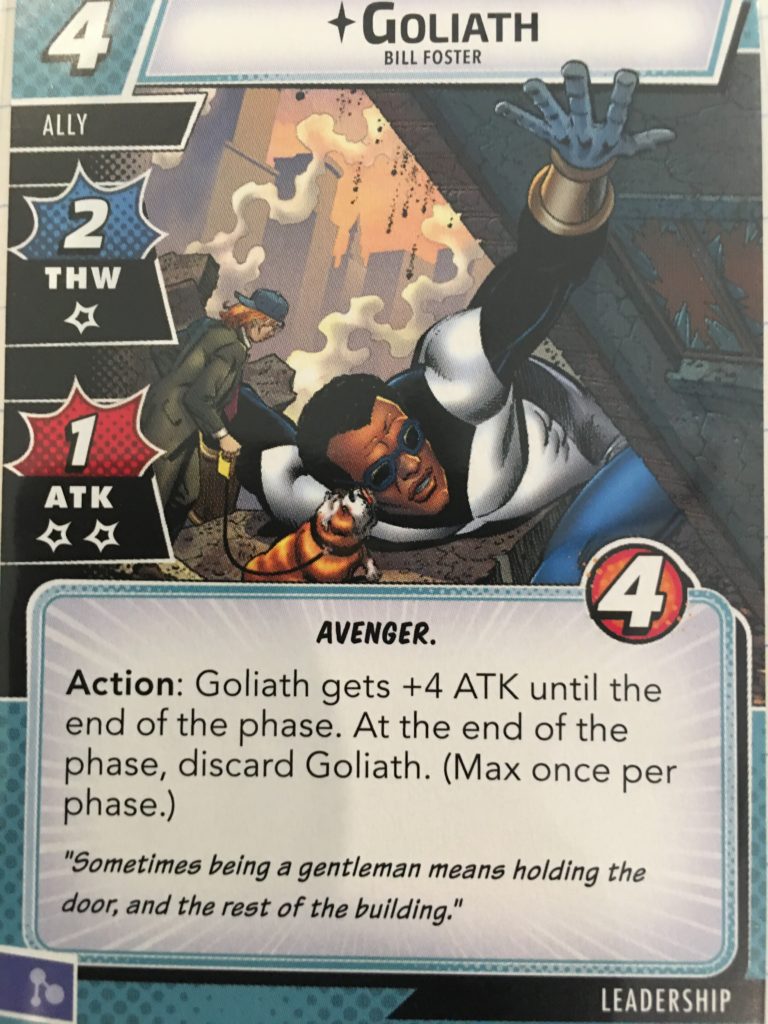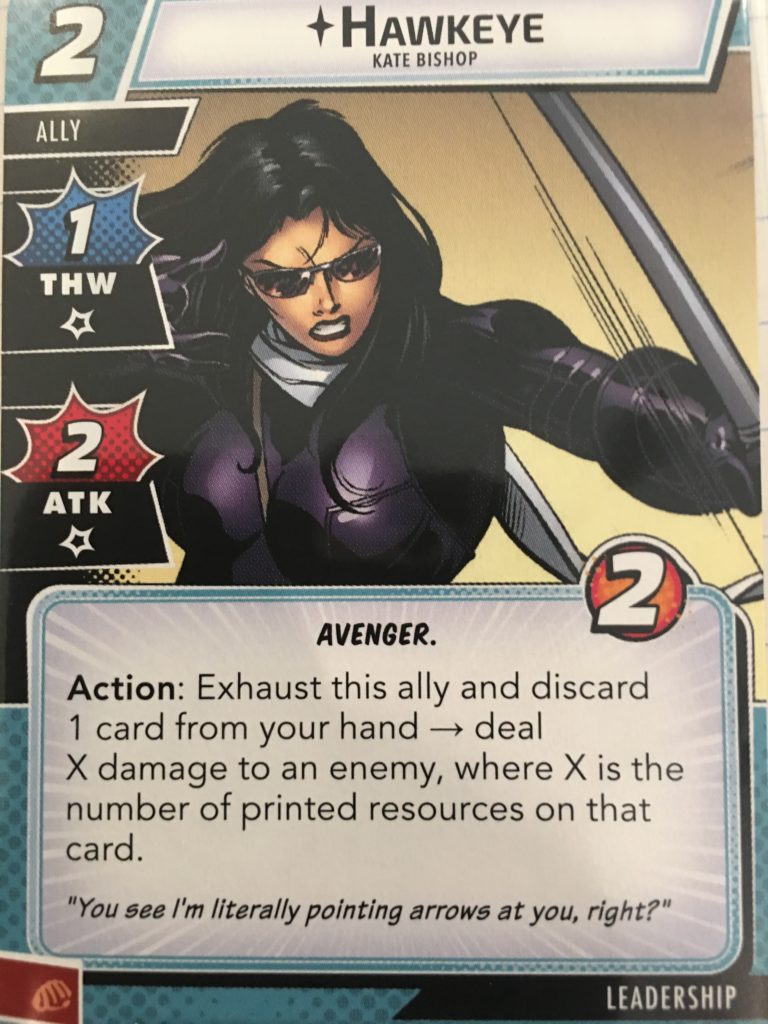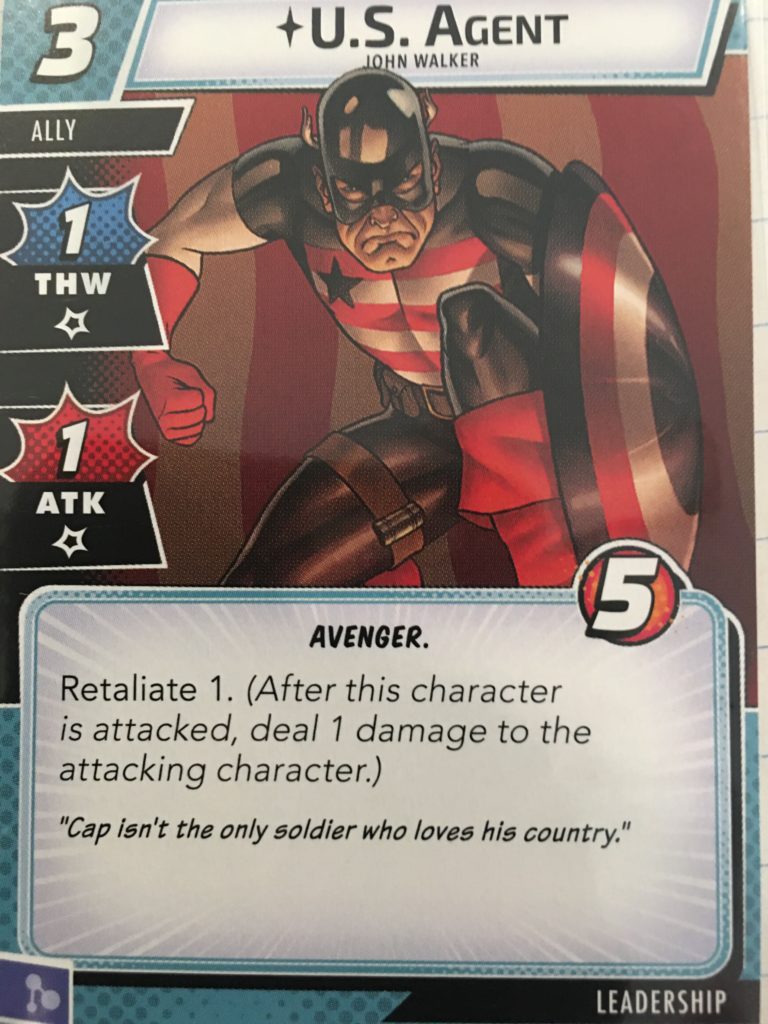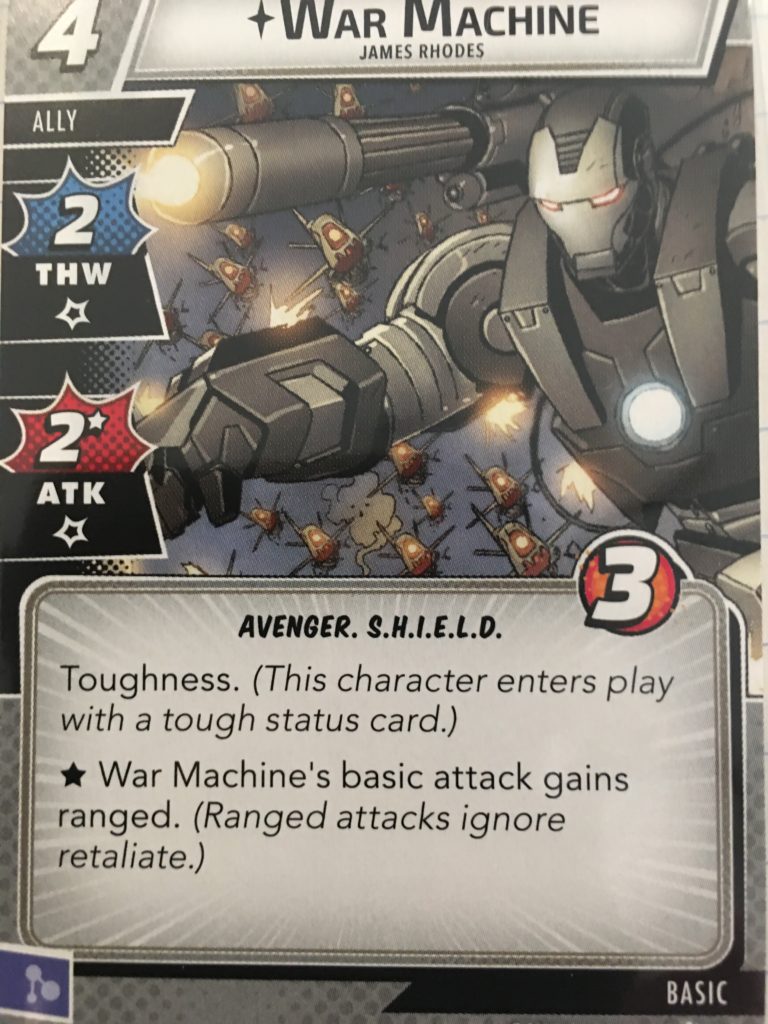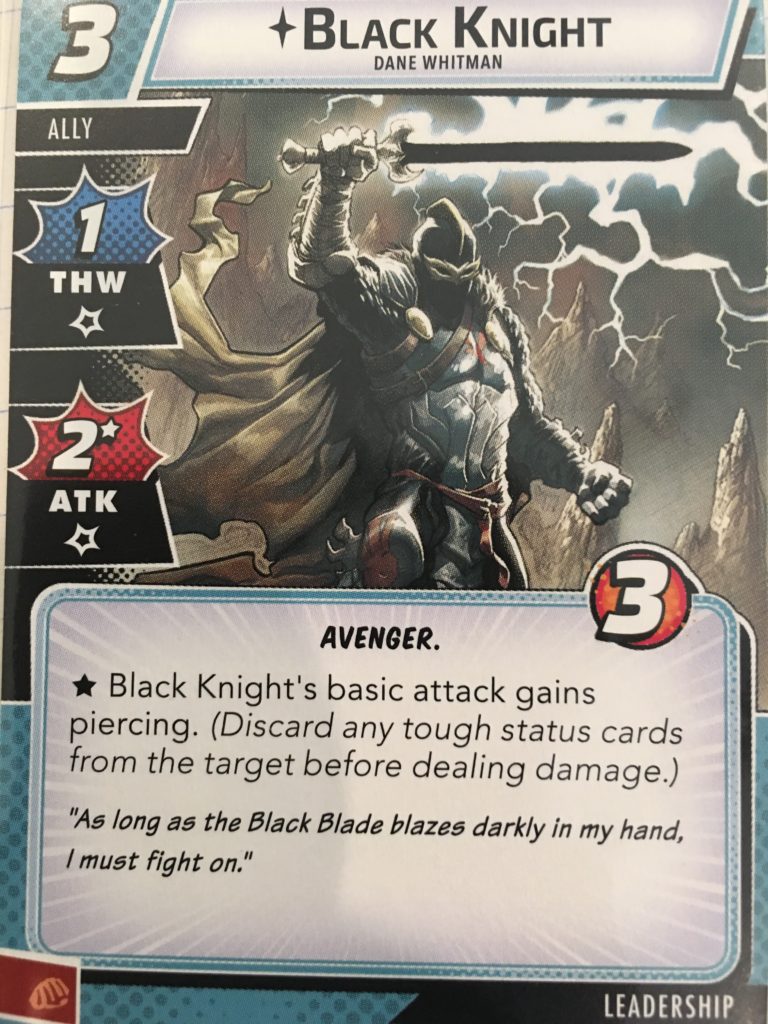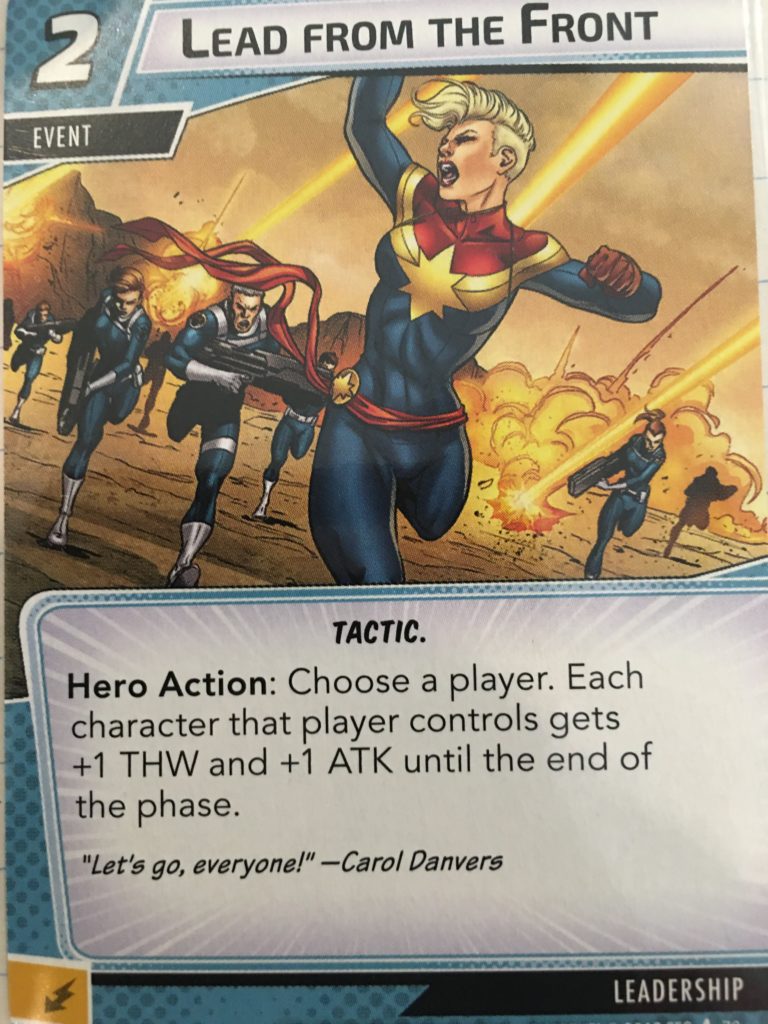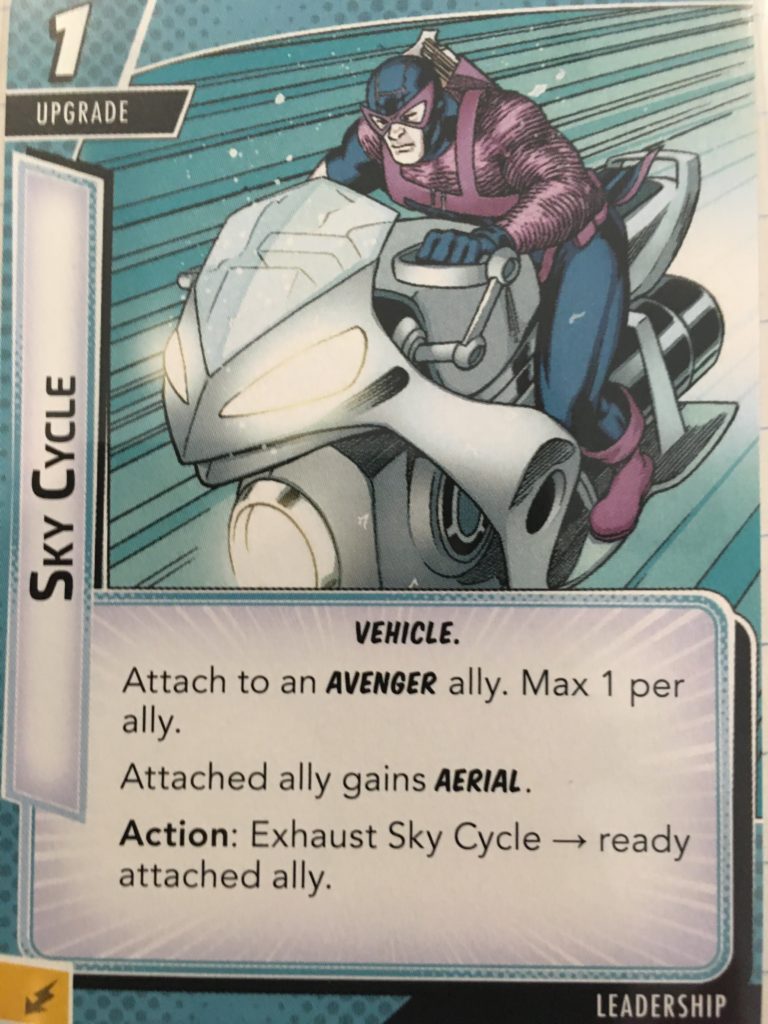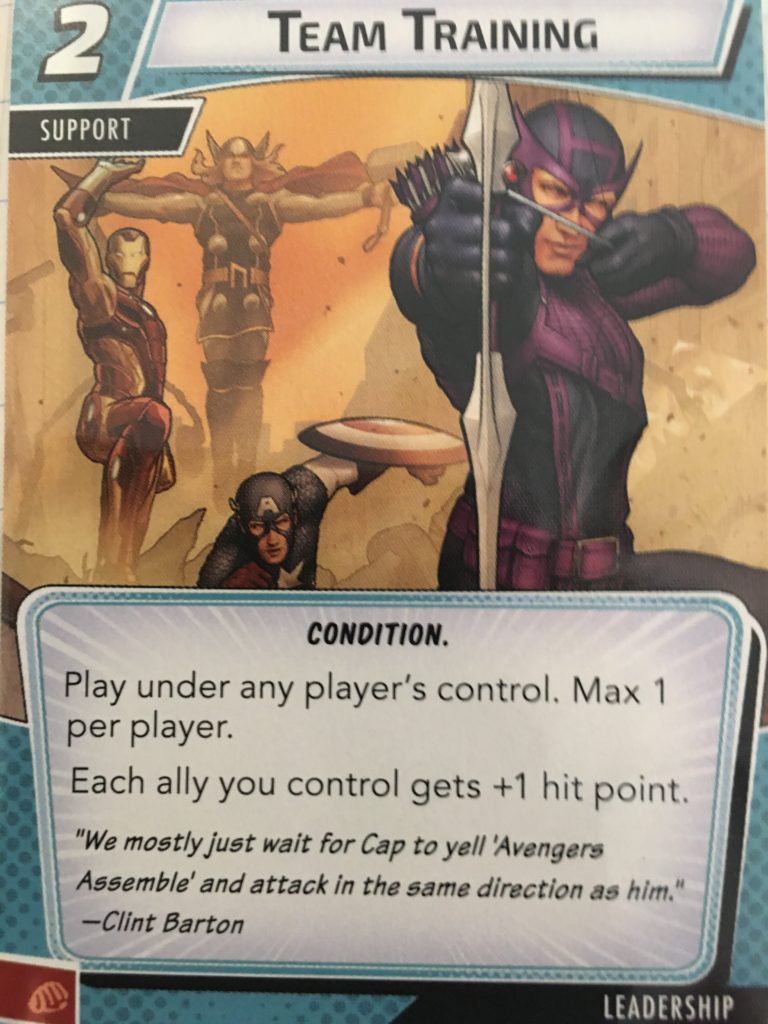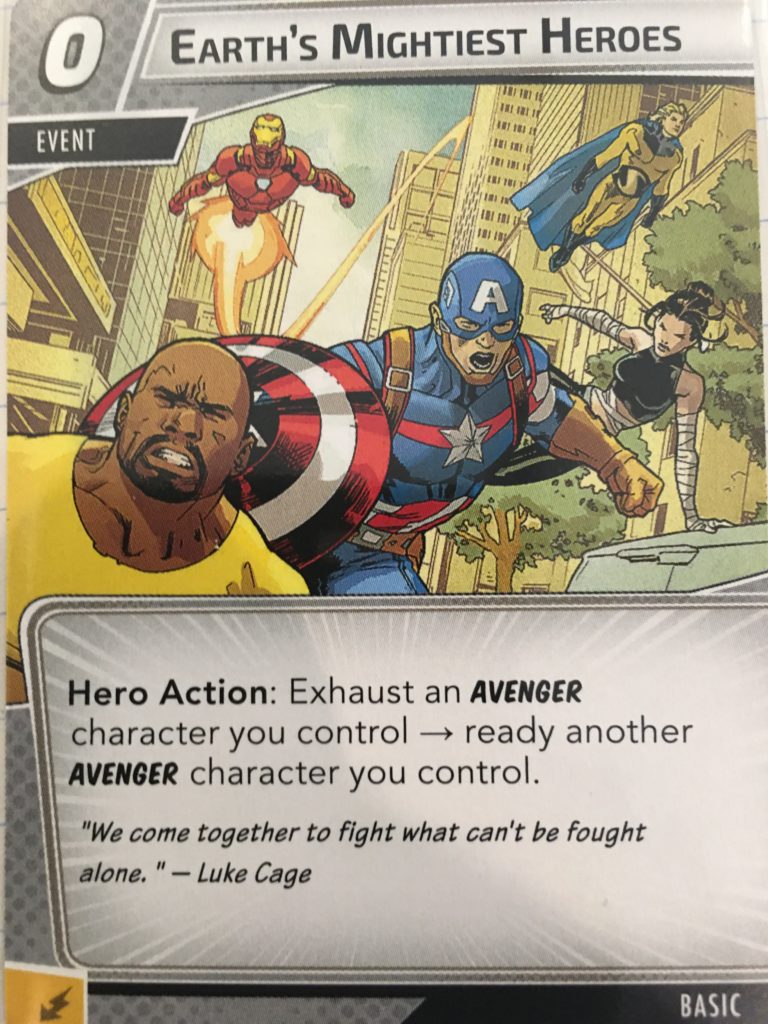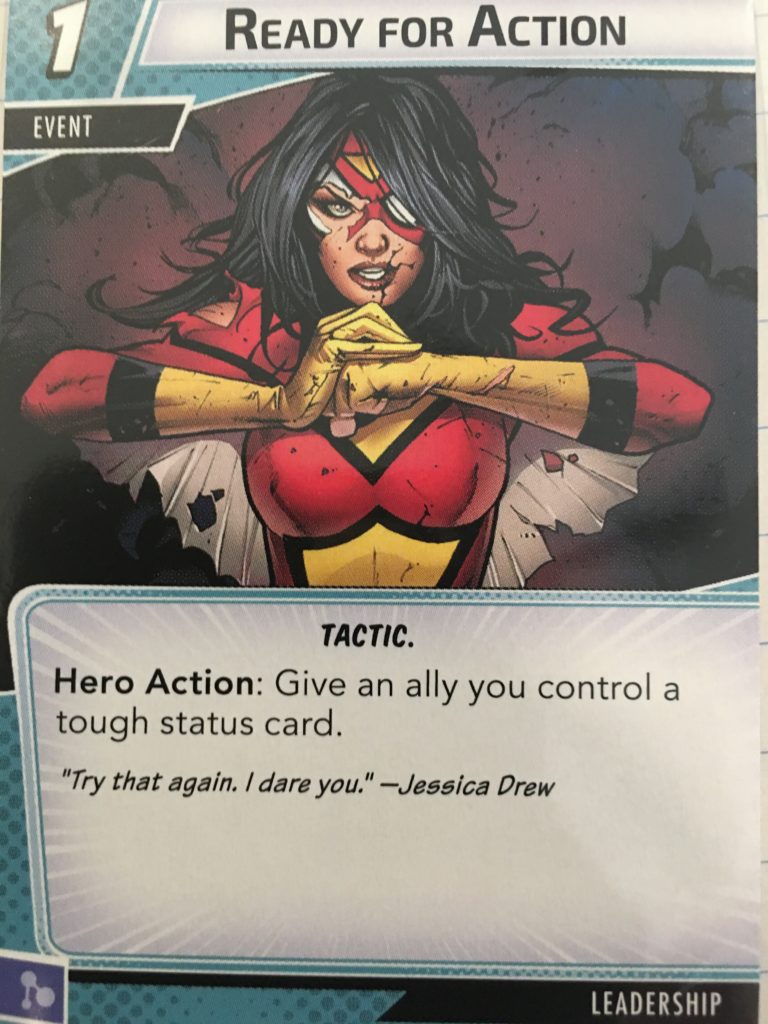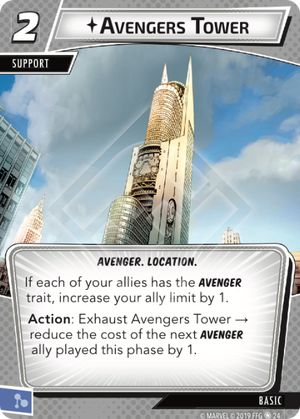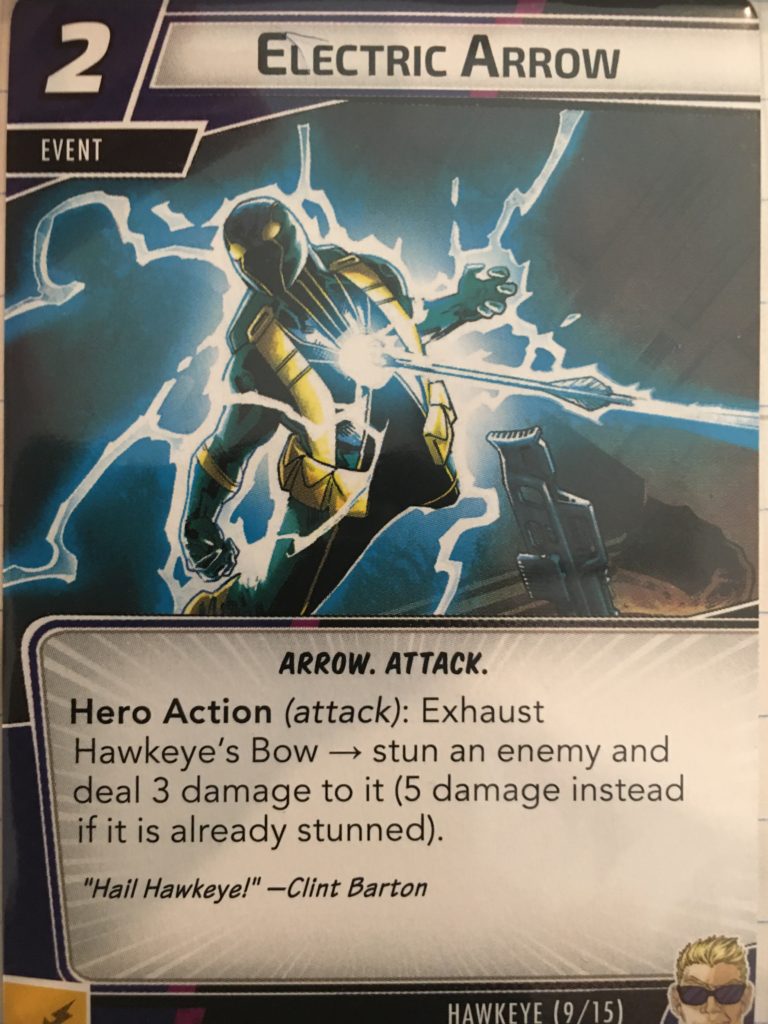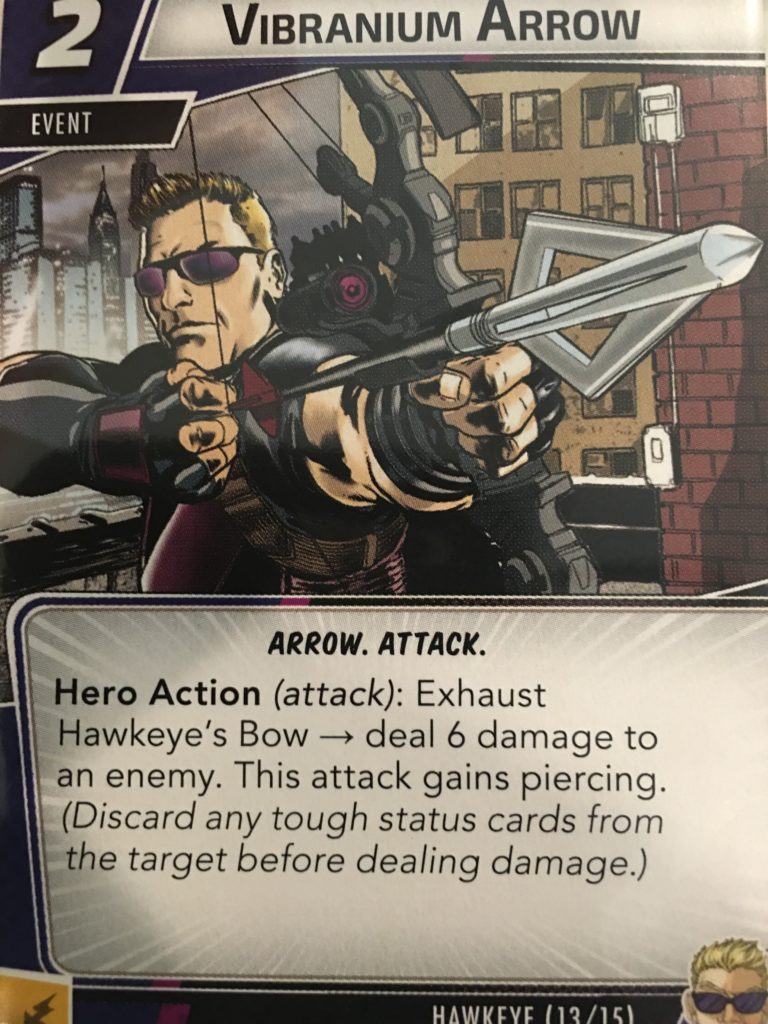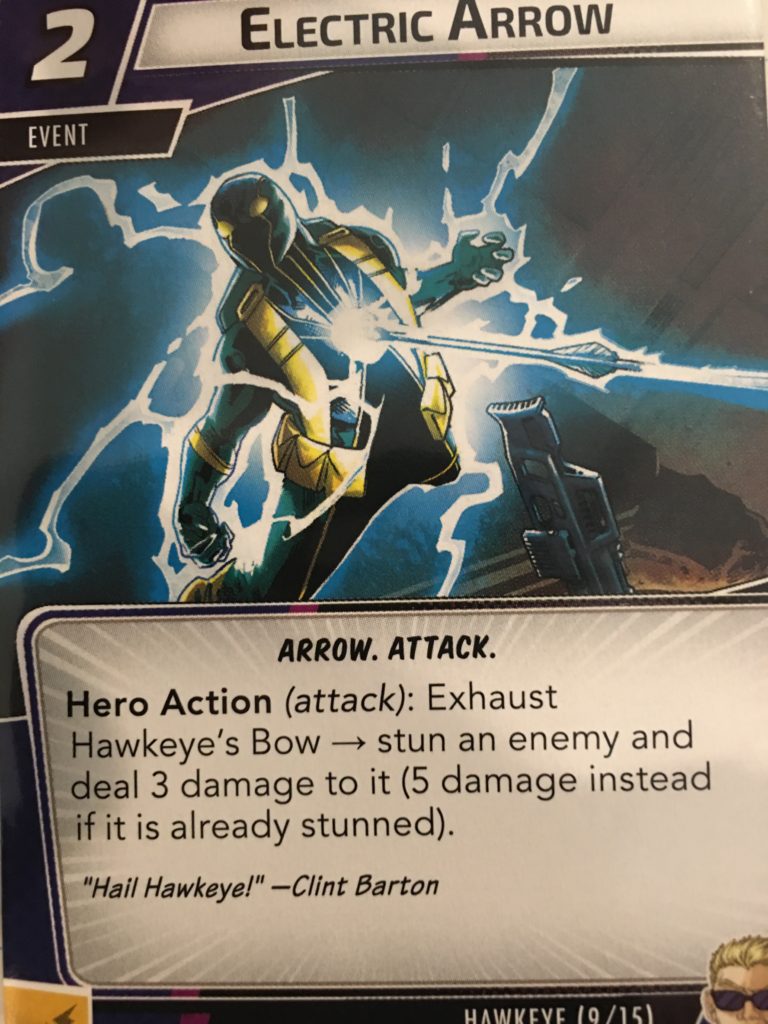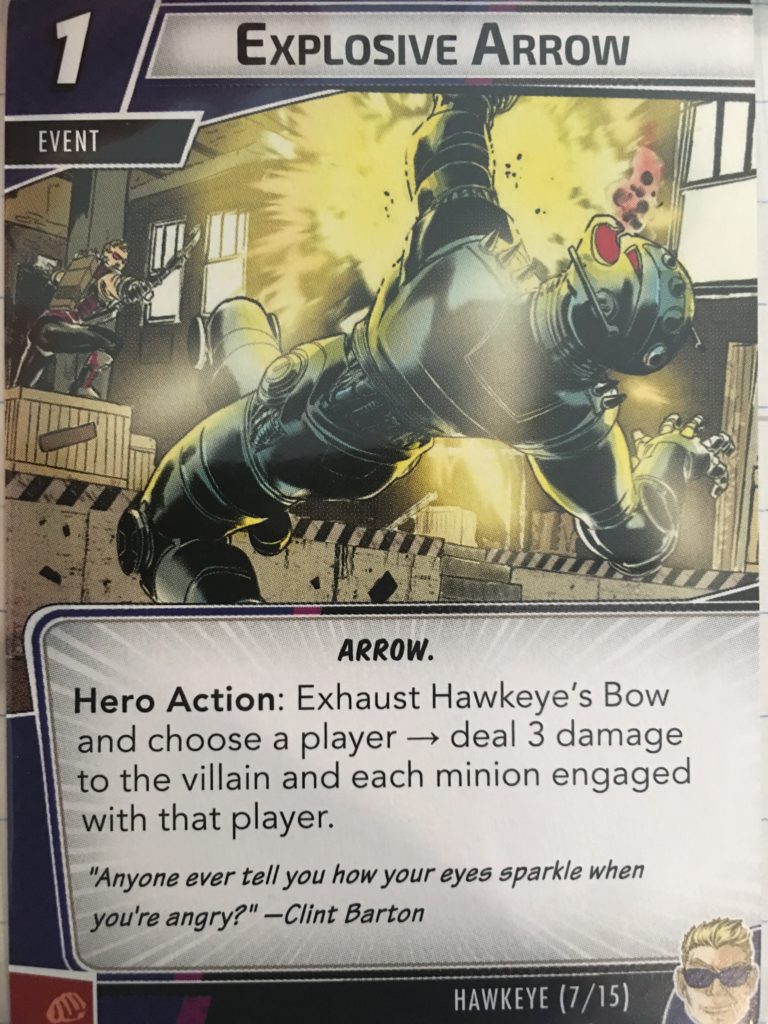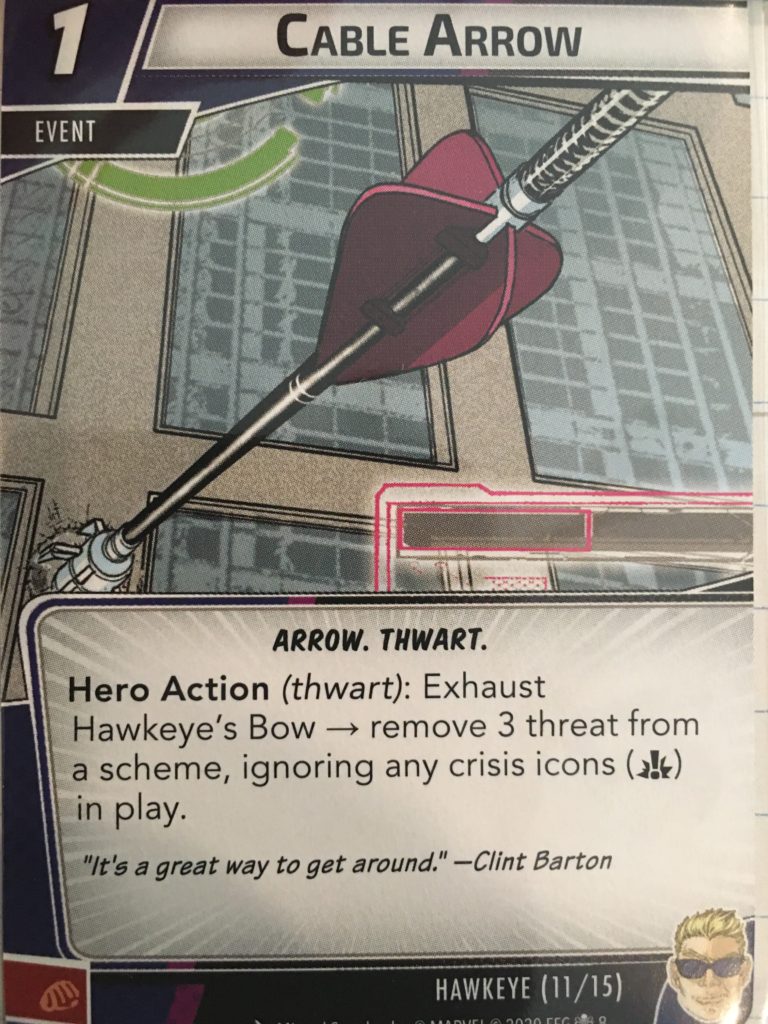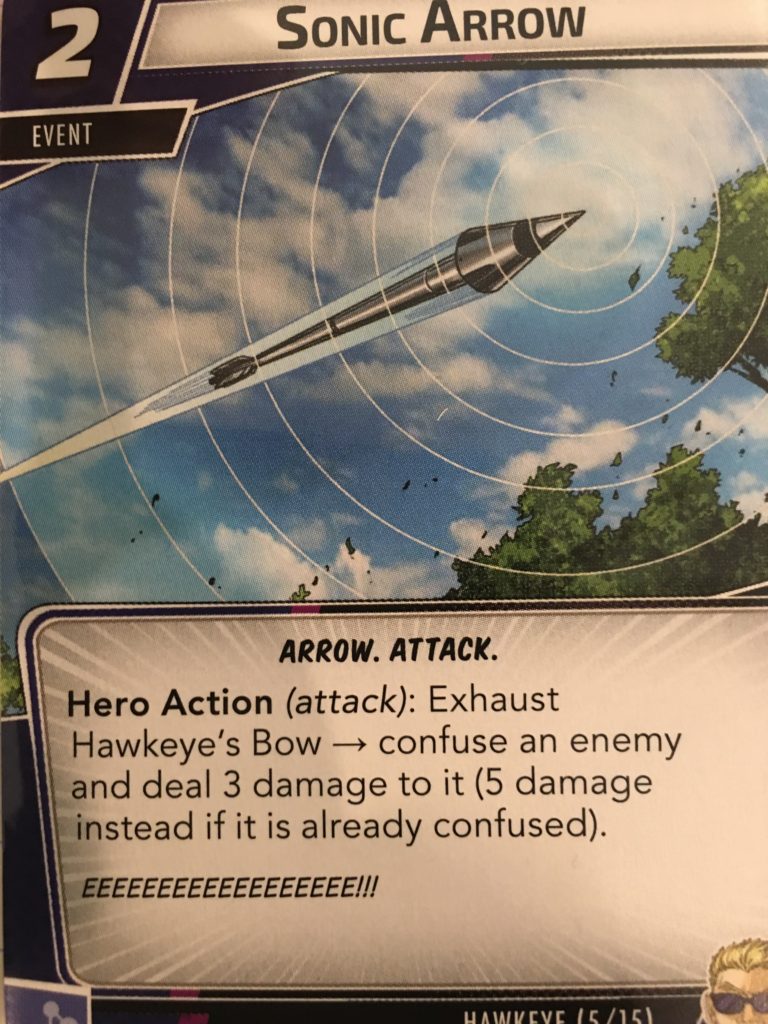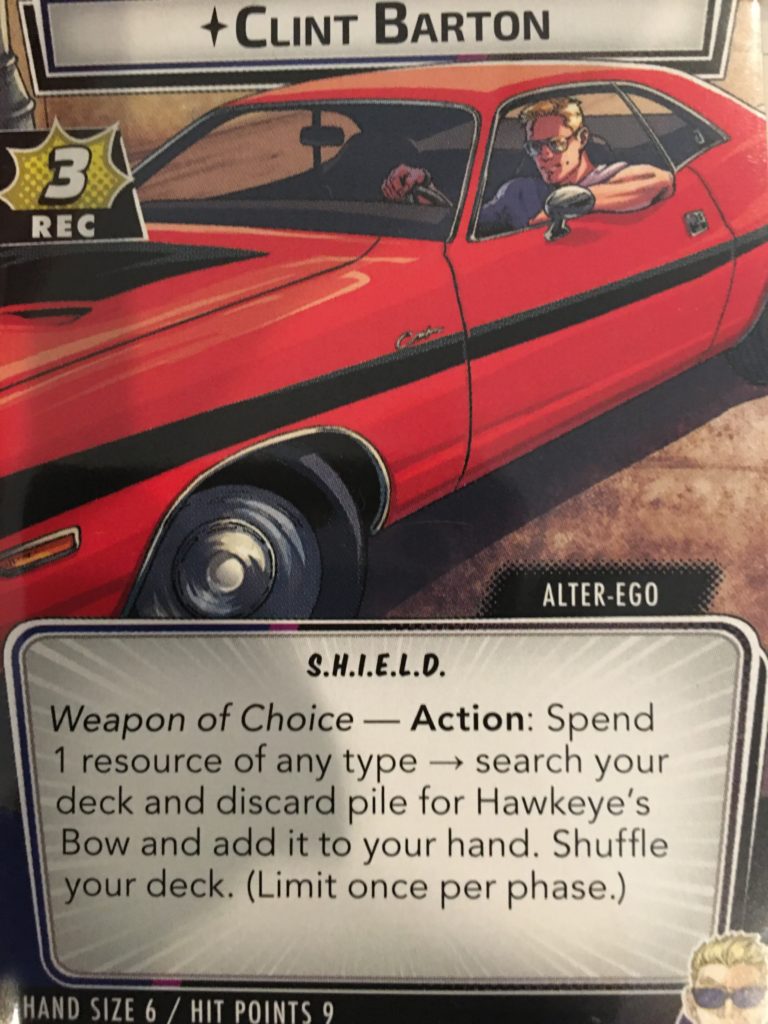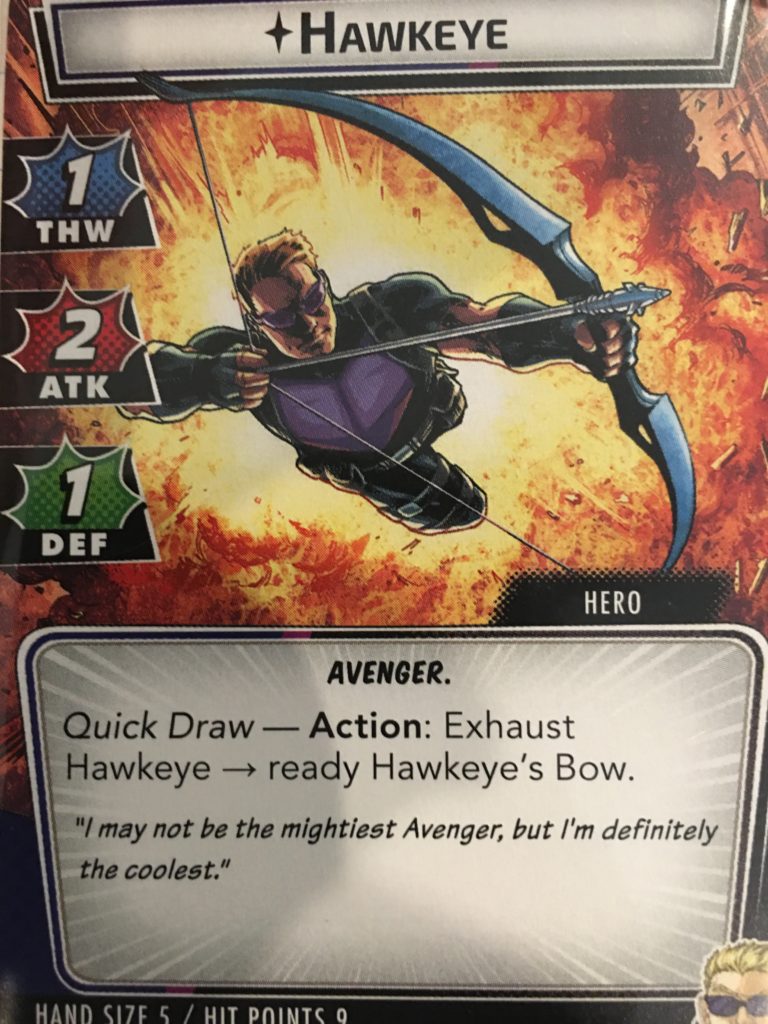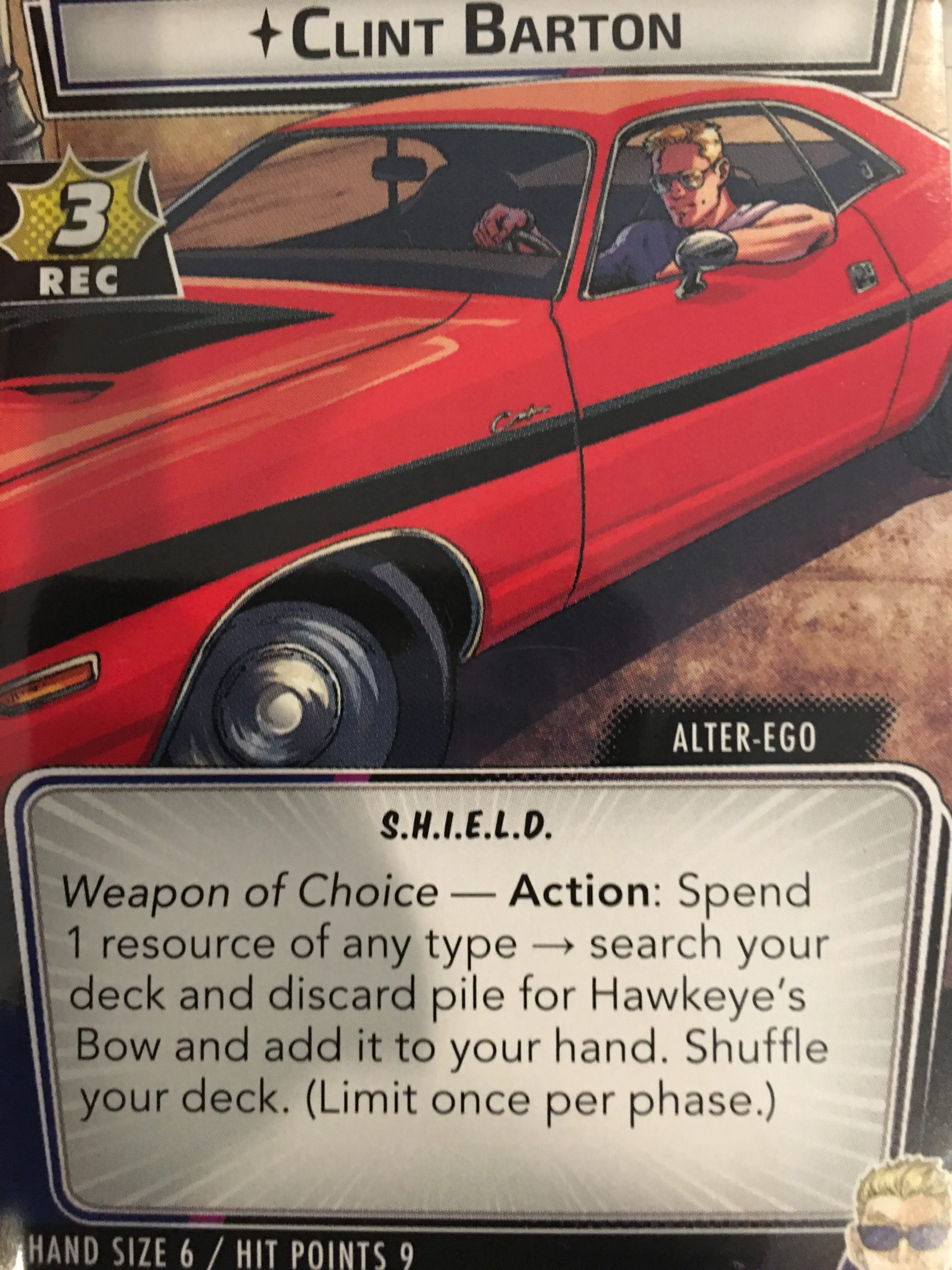
The Hawkeye Hero Deck comes in the Rise of the Red Skull campaign expansion box. It contains 60 cards:
- Hawkeye deck cards (15 cards)
- Leadership Aspect cards (17 cards)
- Basic cards (8 cards)
- Hero card (1 card)
- Hawkeye Obligation card (1 card)
- Hawkeye Nemesis cards (5 cards)
Decklist
Internet Opinion
Trying to boil down the entire internet’s opinion on anything, including a Marvel Champions hero deck, is a fool’s errand. Much like trying to avoid getting rickrolled. However, a few things stand out if you go looking for it:
- Hawkeye is considered one of the weaker heroes, especially straight out of the box
- Hawkeye is squishy, tying his pal Natasha (Black Widow) with only 9 hit points, but one lower DEF
- Hawkeye plays better cooperatively, or multi-handed solo
- Aggression and Leadership are the preferred aspects
- Hawkeye is overly dependent on Mockingbird (Hawkeye version) and Hawkeye’s Quiver
- Hawkeye is slow to get started (see above point), and needs allies to provide some bumps in the road (especially if playing solo)
My Experiences and Takeaways
I don’t have extensive experience using the Hawkeye default list. I played Klaw Standard five times, but that was enough to identify some strengths and weaknesses and make suggestions about how it could be modified to play better.
First: I agree with everything listed above (so, yeah, the Internet was right) except about the preferred aspects. And that’s just because I have only tried out the default/starter deck and cannot confidently speak to it.
Squishy + Need Allies
Hawekeye is quite fragile, and needs allies or some other way to protect himself from damage. This becomes quite clear after a few playthroughs with his starter deck.
The starter deck only include six allies:
With only six allies, you will on average get one ally in your opening hand. From then on, your odds are just slightly below average on getting an additional ally each turn. Given your reliance on needing to protect Hawkeye, this is not a sustainable way to play this hero. As much as Hawkeye’s Bow and Hawkeye’s Quiver are necessary, so is your allies (particularly Mockingbird, but any allies will do to help stall until you get your board built).
When you modify the Hawkeye deck, you want to look for more allies. And especially allies that cost 3 or less (or, in other terms, 4 or fewer effective resources). Unfortunately, if you’re limited to just the Marvel Champions Core Set and Rise of the Red Skull you don’t have a lot of options for lower cost allies. In fact, you just have Maria Hill at your disposal.
So, why do we have all of these ally-centric cards?
There are 15 ally-related cards (counting multiples individually). And given the resource constraints in the Hawkeye starter deck and the relatively higher cost allies, you’re not able to fully take advantage of these cards. This is one of the most frustrating situations when playing the deck: oftentimes you end up with ally-centric cards but no allies. Or, you don’t have the resources to both play an ally and a related card. If you’re limited to just the two boxes (Core Set and Rise of the Red Skull), then you most likely should drop a number of the ally-related cards. Or at least find a better way to balance them against your resource needs (playing allies, shooting arrows).
Threat can be a real threat
The games I win required a number of things, but one of those was always being able to control the threat on the board. This generally involved one or more Cable Arrow. shot straight at the main scheme (taking advantage of the ability to ignore crisis icons which you get immediately when playing against Klaw).
I often find that I can burst down the enemy towards the end, so consider playing conservatively during the early and middle parts of the game. You may need to take the lower threat (compared to damage) in order to make sure you don’t get overrun by threat due to a bad card draws.
Shooting Gallery
The deck is well designed to portray what we expect most out of Hawkeye: shooting a variety of trick arrows to control the battlefield. His arsenal (hopefully sitting in his quiver) includes: threat control, confusion, stunned, piercing (with 6 damage attached), and crowd control. Not a bad assortment…
No, Really, Hopefully Sitting in the Quiver
You want to get Hawkeye’s Quiver. Hard mulligan for it. That is: consider mulliganing everything in your opening hand if you don’t have the quiver. I find it to be that important for Hawkeye’s ability to continually shoot arrows while also managing resources to enable other plays.
Why? It’s essentially free card draw every turn (rarely do you not find an arrow). And digging five cards to find an arrow, gives you roughly 50% odds of finding the specific arrow you need (5-6 cards drawn + 5 cards from quiver). The odds depend on how many cards left in deck and if you have already used/discarded one copy of the arrow you need.
Mockingbird + Arrows
Perhaps this was the intent with design, but you can set up turns where you can play Mockingbird + an arrow every turn. Now, this locks you out of other plays but that’s a fairly effective routine (3 damage from hero, 2 THW/ATK from Mockingbird, an arrow shot, and then prevent enemy attack). Mix in the Confuse/Stun effects from arrows, and you can find opportunities to sneak in other plays when not needing to return Mockingbird to hand.
Hawkeye’s Quiver gives you an extra resource (using arrow from quiver instead of from hand) and Expert Marksmanship also reduces the arrow cost. Even Avengers Tower helps make this more feasible, though I don’t particularly like the card in the default/starter deck.
This is no guarantee win in true solo. But setting up recursion in two-handed solo or multiplayer can go a long way towards stabilizing.
Boring Alter-Ego and Underwhelming Hero Stats
The Alter-Ego only serves to get you Hawkeye’s Bow. And unless the enemy deck forces a discard, you are only using this once during the game. This means you have no incentive to flip once you’re in hero mode. Except if you need some emergency healing and/or an opportunity to hide from enemy attacks.
Crossfire is a Well-Designed Nemesis Card
Crossfire is well-designed to match up with Hawkeye.
Let’s take a look…
- Hawkeye struggles with defending himself. And Crossfire comes out guns ablazin’ with the Quickstrike ability that allows him to immediately attack Hawkeye if in Hero form. And what did we just say about his Alter-Ego….So, yeah, there’s a good chance you will be in Hero mode when Crossfire comes out.
- Your arrows and hero ATK do three damage unless you have boosted them somehow. Crossfire has four hit points. Just out of range. You’ll have to double up or suboptimally use your Vibranium Arrow to deal two extra points of unnecessary damage.
- Crossfire has piercing, and grants piercing when revealed as a Boost card. This directly counters the most cost effective way to help keep your allies around: Ready for Action.
Errata and Common Questions
Hawkeye’s Quiver
As printed, it is a bit ambiguous as to what to do with the cards you do not select. Searching effects (at large, not just with Hawkeye’s Quiver now require shuffling the deck


